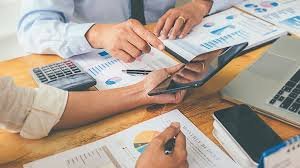Claiming Business Expenses on Your T2 Return

Running a business in Canada comes with many responsibilities, and one of the most important is filing your corporate tax return, also known as the T2 return. For companies in Scarborough, working with a trusted corporation tax accountant in Scarborough like those at WebTaxOnline can make the process smooth and stress-free. A key part of preparing your T2 return is understanding how to claim business expenses correctly. Claiming these expenses can lower your taxable income, save your business money, and ensure you stay compliant with the Canada Revenue Agency (CRA). This blog will explain what business expenses are, which ones you can claim, and how to do it properly on your T2 return, all in simple language.
What Are Business Expenses?
Business expenses are costs you incur while running your company. These are the day-to-day expenses that keep your business operating, like rent for your office, salaries for your employees, or supplies you need to deliver your products or services. The CRA allows businesses to deduct these expenses from their income when calculating taxes, which reduces the amount of tax your company has to pay. However, not every expense qualifies, and the rules can be tricky. That’s why understanding what counts as a deductible expense is so essential.
To be deductible, an expense must be reasonable, related to your business, and supported by proper records, like receipts or invoices. For example, if you run a bakery, the cost of flour and sugar would be deductible because they’re directly tied to your business. On the other hand, personal expenses, like a family vacation, wouldn’t count. Keeping clear records and knowing the CRA’s rules will help you claim expenses correctly and avoid problems during a tax audit.
Why Claiming Expenses Matters
Claiming business expenses on your T2 return is a smart way to reduce your company’s taxable income. The less taxable income you have, the less tax you pay, which means more money stays in your business. This can help you reinvest in your company, whether it’s hiring more staff, buying new equipment, or expanding your operations. However, claiming expenses incorrectly or forgetting to claim the ones you’re entitled to can cost you money or lead to penalties from the CRA. That’s why it’s helpful to know which expenses are deductible and how to report them properly.
Another reason to focus on claiming expenses is that it shows the CRA your business is following the rules. By keeping detailed records and only claiming allowable expenses, you reduce the chance of an audit or fines. Plus, working with a professional who understands corporate taxes can make sure you’re taking advantage of every deduction available while staying compliant.
Common Business Expenses You Can Claim
There are many types of expenses you can claim on your T2 return, as long as they’re related to your business and reasonable in amount. Below are some of the most common ones businesses in Canada claim.
- Office and Operating Costs
These are expenses you pay to keep your business running. For example, if you rent an office or a storefront, the rent payments are deductible. Utility bills, like electricity, water, and internet for your business location, also count. If you buy office supplies, such as paper, pens, or printer ink, those costs are deductible, too. For businesses that operate from home, you can claim a portion of your home expenses, like a percentage of your rent or mortgage interest, based on how much of your home is used for business purposes.
- Employee Salaries and Benefits
If you have employees, their wages, salaries, and benefits are deductible. This includes things like bonuses, contributions to pension plans, or health insurance premiums you pay on their behalf. However, you need to make sure you’re following CRA rules for payroll deductions, like CPP (Canada Pension Plan) and EI (Employment Insurance). Keeping accurate payroll records is essential to claim these expenses without issues.
- Marketing and Advertising
Promoting your business costs money, and many of these expenses are deductible. For example, if you pay for online ads, print flyers, or a website, those costs can be claimed. Even the cost of hosting a promotional event or creating business cards counts. The key is that the expense must be for promoting your business, not for personal use.
- Travel and Vehicle Expenses
If you or your employees travel for business, expenses like airfare, hotel stays, and meals can be deductible. However, the CRA has strict rules about travel expenses, especially for meals, which are typically only 50% deductible. If you use a vehicle for business, you can claim costs like gas, maintenance, and insurance, but you’ll need to keep a logbook to show how much the car is used for business versus personal use.
- Professional Fees
Hiring professionals, like accountants, lawyers, or consultants, to help with your business is another deductible expense. For example, if you hire a tax accountant to prepare your T2 return, their fees are deductible. Other professional services, like legal advice for contracts or business consulting, also qualify as long as they’re related to your business.
- Equipment and Capital Expenses
When you buy equipment, like computers, machinery, or furniture, for your business, you can claim a portion of the cost through something called Capital Cost Allowance (CCA). This allows you to deduct the cost of these items over several years based on CRA rules. Smaller items, like tools or supplies, may be fully deductible in the year you buy them if they cost less than a certain amount.
How to Claim Expenses on Your T2 Return
Claiming expenses on your T2 return involves reporting them correctly in the right sections of the form. The T2 return is a detailed document that requires you to list your business income, expenses, and other financial information. Here’s a simple guide to the process.
First, gather all your records, like receipts, invoices, and bank statements, to support your expenses. Organize them by category, such as rent, salaries, or advertising, to make it easier to fill out the form. The T2 return has specific lines for different types of expenses, like Line 8521 for advertising or Line 8690 for insurance. You’ll need to enter the total amount for each category.
If you’re claiming home office expenses or vehicle costs, you’ll need to calculate the business-use portion. For example, if you use 20% of your home for business, you can claim 20% of your home-related expenses, like utilities or rent. For vehicles, you’ll use your logbook to determine the percentage of business use.
For capital expenses, like equipment, you’ll need to calculate the CCA based on the CRA’s rates for different types of assets. This can be complicated, so many businesses rely on a tax professional to get it right. Once you’ve filled out the expense sections, subtract the total from your business income to find your taxable income.
Keeping Good Records
Good record-keeping is critical when claiming expenses. The CRA requires you to keep receipts, invoices, and other documents for at least six years in case they audit your business. Make sure your records are clear and organized, showing the date, amount, and purpose of each expense. For example, a receipt for a business lunch should include who you met with and why it was business-related.
Using accounting software can help you track expenses and generate reports for your T2 return. Many businesses also work with a tax accountant to ensure their records are accurate and complete. This is especially helpful if your company has a lot of expenses or complex transactions.
Common Mistakes to Avoid
When claiming expenses, there are some common mistakes to watch out for. One is claiming personal expenses as business expenses, which can lead to penalties if the CRA audits you. For example, you can’t claim your groceries or a family vacation as a business expense. Another mistake is not keeping proper records. If you don’t have receipts or invoices to back up your claims, the CRA may disallow them.
Another issue is claiming expenses that aren’t reasonable. For example, if you claim a $10,000 business dinner, the CRA might question whether it was necessary for your business. Finally, some companies forget to claim expenses they’re entitled to, which means they pay more tax than necessary. Working with a professional can help you avoid these mistakes and maximize your deductions.
Why Work with a Tax Professional?
Preparing a T2 return and claiming business expenses can be complicated, especially if your business has a lot of transactions or you’re not sure which expenses qualify. A tax professional can help you navigate the process, ensure you’re claiming all allowable costs, and avoid errors that could trigger an audit. They can also help you plan for future tax savings by advising you on how to structure your expenses.
Conclusion
For businesses in Scarborough, working with a local expert like those at WebTaxOnline can make a big difference. They understand the unique needs of companies in the area and can provide personalized advice to help you save money and stay compliant with the CRA. Whether you’re a small startup or an established company, having a trusted tax professional on your side can give you peace of mind and let you focus on growing your business.




